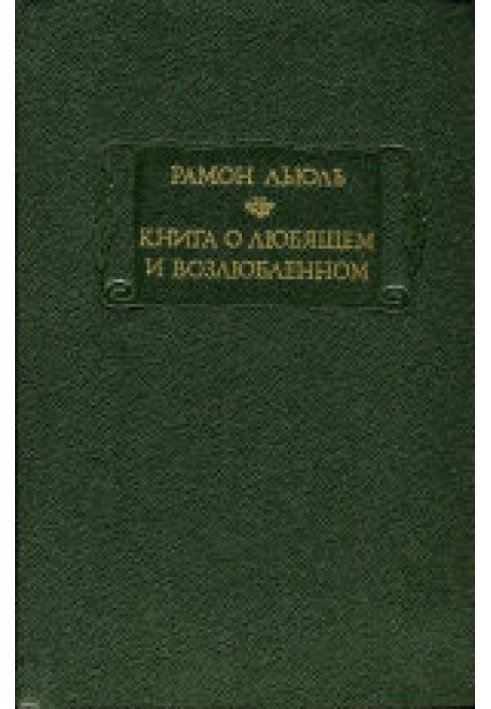Leul R. Book about the Lover and the Beloved
 Instant download
Instant download
after payment (24/7)
 Wide range of formats
Wide range of formats
(for all gadgets)
 Full book
Full book
(including for Apple and Android)
The Dominicans were a brotherhood of philosophers, while the Franciscans were a brotherhood of singers. Dominico, with the gift of communication, and not violence, converted heretics, and Francis, whose work is, as it were, more subtle, converted ordinary people. By the 13th century, a new Dominic is needed to convert the pagans, and Francis is even more needed to convert the Christians. Both missions were consciously undertaken by the “troubadour of Christ” Raymond Lull (or Ramon Llull), trying to “graft” Franciscanism into Dominicanism, trying in his mystical books to appeal to the hearts of Christians mired in vices, and in his scholastic works - to the minds of pagans and heretics . A poet, philosopher and missionary, one of the most original representatives of the medieval worldview on its positive side, Raymond Lull was not an “alchemist”, a “Spaniard”, a “monk” and a “priest”, his philosophy is a “philosophy of the communion”, a philosophy of the converted Christianity seeking to convert. His amazing combination of high ideal aspirations and practical calculations, mathematical calculations and mystical insights allowed him, despite all the phantasmagoric nature of his missionary aspirations, to very pragmatically make plans for converting his closest neighbors to Christianity - Arabs and Jews, as well as the Tatars who conquered Kievan Rus. Natural love, exalted love - Ramon the madman was blissful, swimming against the tide, trying to achieve the impossible. However, his negative experience clearly proves the need for wise madness, “self-inflicted martyrdom” in confrontation with a “foolish” world. Be that as it may, Lull should be recognized as one of the most significant medieval thinkers in Europe, who “grafted” the oriental rose - the methodology and imagery of Arab and Jewish philosophy, logic and mysticism - to the European wild. So the troubadour of the Beautiful Lady appeared as the troubadour of Christ. CONTENTS: BOOK ABOUT THE LOVER AND THE BELOVED (translation by V.E. Bagno) (5). BOOK ABOUT THE ORDER OF KNIGHT (translation by V.E. Bagno) (71). Prologue (71). - Part I. On the purpose of chivalry (77). - Part II. On the duties of a knight (82). - Part III. About the tests to which a squire who intends to be knighted must be subjected (99). - Part IV. On the rite of knighting a squire (106). - Part V. On the symbolism of knightly weapons (111). - Part VI. About the morals and customs of knights (118). - Part VII. About the honors that should be given to a knight (129). BOOK ABOUT ANIMALS (translation by V.E. Bagno) (133).1. About the election of the king (135). - 2. About the royal council (139). - 3. About the treason that the Fox planned against the king (142). - 4. About how the Fox was chosen as the royal gatekeeper (146). - 5. About the messengers whom Leo sent to the king of people (159). - 6. About the duel between Leopard and Cheetah (169). - 7. About the death of the Fox (179). SONG OF RAMON (translation by A.M. Koss) (185). APPENDICES V. E. Bagpo. Troubadour of Christ (191).V.E.Bagno. Russian Lullianism as a cultural phenomenon (250). Textological reference (266). Notes (compiled by V.E. Bagno) (270).
Data sheet
- Name of the Author
- Раймунд Луллий
- Language
- Russian
- Translator
- Всеволод Евгеньевич Багно













